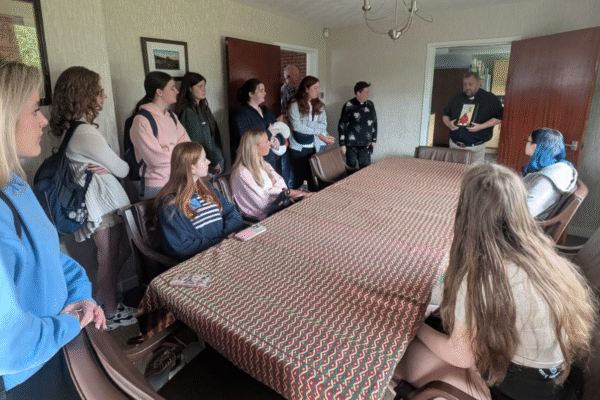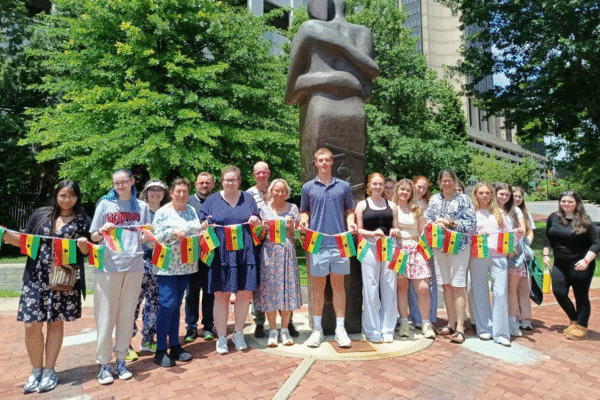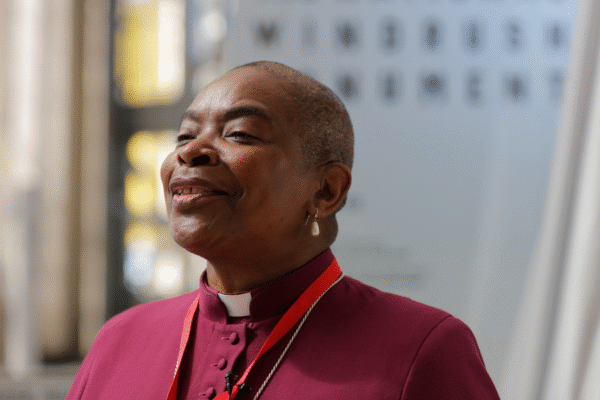This summer, young people from the Diocese of Liverpool undertook a powerful and deeply moving journey as part of the Triangle of Hope Youth Pilgrimage – a long-standing partnership between the dioceses of Liverpool, Virginia (United States), and Kumasi (Ghana). The programme invites young people to explore the legacy of the transatlantic slave trade through prayer, education, and the shared work of reconciliation.
The Liverpool pilgrims arrived in Washington D.C. on Sunday 29 June and were warmly welcomed by their Virginian companions. Sadly, due to last-minute visa issues, the Ghanaian pilgrims were unable to travel. Though absent in person, they were present in every gathering, prayer, and reflection, their absence deeply felt but spiritually honoured.
The pilgrimage began in Washington D.C. with a visit to the National Museum of African American History and Culture – an experience described as both sobering and inspiring. Pilgrims later travelled to the Hite plantation in Virginia, once owned by an Anglican family involved in slavery, where the harsh realities of enslaved life were brought into focus.
At Shrine Mont, a rural retreat centre in the Blue Ridge Mountains, pilgrims engaged in prayerful activities – from labyrinth walks and Eucharist in an outdoor cathedral to quiet contemplation overlooking the valley. These moments of spiritual grounding helped prepare the group for the emotional and historical weight of the days ahead.
In Colonial Williamsburg, the group visited The Bray School – an Anglican-run institution that educated children of African heritage while preparing them for servitude. At Bruton Parish Church, pilgrims heard from clergy about the church’s active role in the transatlantic slave trade and held thoughtful conversations about historical complicity and present-day healing.
In Richmond, they met Bishop Mark Stevenson of the Diocese of Virginia, explored the city’s Freedom Monument and Mantle garden honouring Indigenous communities, and visited St Paul’s Church – once known as the “Cathedral of the Confederacy.” There, young members of the congregation shared how their church is reconciling with its past. Pilgrims also spent time at the Black History Museum and St Mark’s Richmond, a church with a strong commitment to social justice.
The final days saw the group walk the Richmond Slave Trail, stand at the site where enslaved Africans were sold, and visit the home of U.S. President and slaveowner James Madison. At the University of Virginia, they paid tribute to enslaved workers whose contributions are only now being properly recognised. At the Reconciliation Statue in Richmond – one of three across the world, with others in Liverpool and Benin – the pilgrims reflected on the global story of slavery, solidarity and healing.
Reflecting back on the pilgrimage, we spoke with some of those who attended and here is what they had to say:
Canon Debra Walker, Chair of the House of Laity, described one particularly moving moment:
“It was the 4th of July, and our guide read aloud from Frederick Douglass’s speech: ‘What to the Slave is the Fourth of July?’ It was a powerful contrast – a reminder of the deep injustices once masked by celebrations of freedom. It prompted me to consider how my own life and choices impact people beyond my immediate circle – including those I may otherwise overlook.”
Poppy Richmond, one of the Liverpool youth pilgrims, reflected:
“This trip has deepened my understanding of slavery and its lasting effects. Hearing real stories brought history to life. Building friendships with others on this journey has strengthened my faith and inspired me to share what we’ve learned.”
Lana Pendleton added:
“This pilgrimage reshaped my faith and reaffirmed our mission. Despite the physical challenges, I was constantly reminded why it’s vital to acknowledge the truth of slavery. These experiences, and the friendships we’ve made, will stay with me always.”
Although the Ghanaian pilgrims could not be present, their influence and encouragement were felt throughout. The bonds between our three dioceses remain strong and rooted in hope, truth, and shared purpose.
As the pilgrims return to Liverpool, they carry with them not just memories, but a deeper commitment to justice, reconciliation, and the transforming power of the Gospel. Please continue to hold the Triangle of Hope community in your prayers – and if you know a young person who took part, take a moment to ask them about their experience. You may find your own faith enriched by the story they share.



